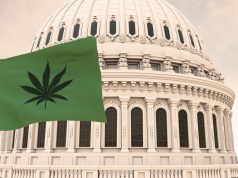
Assuming some of those 148 stores that were granted state licenses have been able to jump through all the other legislative hoops and actually have their doors open, and the state has been able to get its vaunted “seed-tosale” tracking system up and running (still questionable at this writing), by the time you read this, adults should already be able to buy cannabis legally here in Colorado.
What can you expect when you enter a retail facility? You’ll need a valid driver’s license that proves you’re 21 years old, and you’ll need cash to make any purchase — no credit or debit cards or checks at this point. You’ll be able to purchase as little as a joint and no more than an ounce per visit.
The state is giving retail licenses only to already existing medical marijuana dispensaries. This is a good thing. They have been serving patients in spite of jumping through hoops; negotiating expensive, slippery regulations; and having no access to the banking system, all with the threat of federal crackdowns looming in the background, so they know what they’re doing. The people who work there will make it an experience more akin to going to McGuckin than entering a drug den.
Let’s just say the days of “buying pot” are over. When you enter a retail sales outlet, you’ll be introduced to the new world of cannabis. Just like at McGuckin or any great retail outlet, knowledgeable bud tenders will assist you in negotiating the landscape and help you find just what you’re looking for.
There are literally thousands of strains, many with exotic names left over from the outlaw days. Don’t let the appellations scare you off, but don’t be surprised to see, or even purchase, strains with names like Blue Dream, Banana Kush, Colorado Crunchberry, Durban Poison, Bubba Diesel or Bruce Banner.
I’ll leave the intricacies to the experts, but without getting too specific, cannabis contains cannabinoids, chemical compounds that activate cannabinoid receptors on brain cells. There are two basic cannabis plants. Sativa plants are generally higher in the cannabinoid tetrahydrocannabinol (THC), while indica plants are higher in cannabidiol (CBD). THC, of course, is the better known of the two and is mostly responsible for what we generally think of in popular culture as a marijuana head high, while CBD is better identified as an analgesic, or pain-killer. Both have medical properties, but they trigger different effects. For basic reference: sativa = day/indica = night sativa = up/indica = down sativa = work/indica = rest Maybe you’re looking for a sativa to loosen your friends up before a home-cooked supper. Or an indica to relax with when you get home from a particularly distressing day at work. You’ve been reading about how people are using it for medical purposes. Now is the chance to see if there’s something that works for you.
I’ve been talking to people about this. Many tried cannabis when they were younger, but for whatever reason, maybe simply because of its illegality, some haven’t partaken in years, and they are curious about what all the fuss is about. If you’re not curious, by all means, stay away, but if you are, I think you might be in for some pleasant surprises.
Many simply don’t like the smoke. That’s not an obstacle any more, since there are many non-smoke alternatives. One is particularly yummy: The edibles market. You’ve probably heard about, or perhaps even tried, the well-known marijuana brownie. Now you can get anything sweet, whether candies, bars, chews, gummies, suckers, hard candy, mints, cocoa and powdered drink mixes, all with THC or CBD baked inside.
Cheeba Chews, a popular brand, taste like slightly earthy Tootsie Rolls but with a much better mid-afternoon punch. Or perhaps you’ll be drawn to the Beyond Mars Krispy Treat or the incrEdible Monkey Bar? Ensuring quality, consistency and controlled dosages is paramount for edibles makers, and the state is soon expected to issue rules and regulations to help ensure those things. There’s also the ever-expanding world of vapor, oils and butters.
As with any new product, you should know what you’re getting. The state has put in place strict labeling procedures. All products will include information about the facility where it was grown and processed, a serial number to facilitate recalls and product warnings, date of packaging, quantity, amount of THC and/or CBD, a list of non-organic pesticides or fungicides used in its cultivation and results of product tests. Everything must be sold in a sealed, tamper-evident container that is child-resistant and opaque on all sides.
Still, do your homework, spend some time and ask a lot of questions to make sure that you get what you’re looking for.
Type “cannabis strains” into a search engine, and you’ll find websites with helpful information. I use a free, handy phone app called Weedmaps, which shows the locations of stores, with detailed information on menus, prices and deals, along with videos and patient reviews. As of this writing, it’s only for medical outlets, but I’m sure the company will be updating it for the retail market ASAP.
Sales of medical marijuana exceeded all expectations in the state’s latest fiscal year. Dispensary retail sales from July 1, 2012, to June 30, 2013, totaled $329 million, reports the Colorado Department of Revenue. That’s an increase of $110 million over the year before.
That means that medical marijuana patients last year spent an average of $2,900 a year, or $242 a month, $60 a week, $8.64 a day, for medical marijuana. It also brought the state $9,112,237 in tax revenues. The state also announced this month that the price of a medical cannabis card went down to $15 per year. Reason? Big surplus in money — $13 million in the registry fund.
Send tips, suggestions and criticisms to [email protected].
Respond: [email protected].














